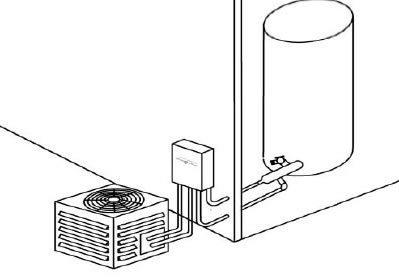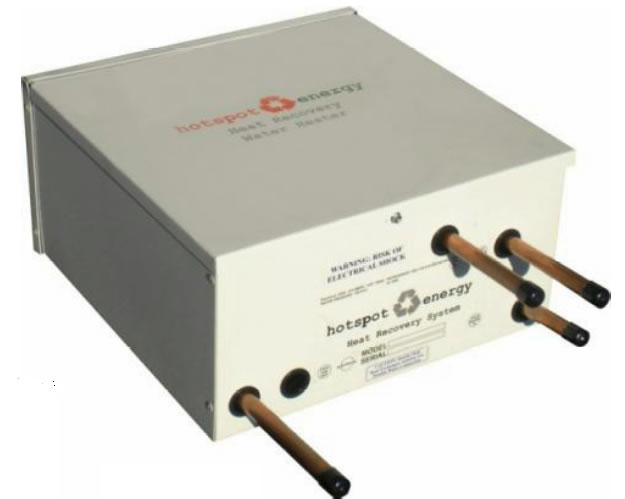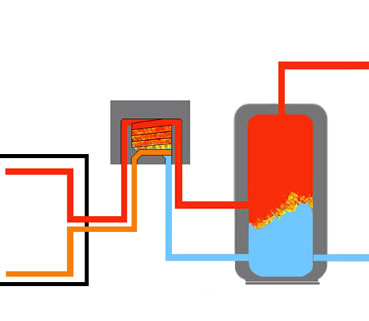Waste Heat Recovery
Waste heat recovery is a possible way to achieve net zero at home. Jeff Wilson investigates a holistic approach to residential waste heat recovery.

Way back in 1980, my dad had a ground source heat pump (GSHP) installed at our brand new passive solar home. The home had been designed by my dad and my maternal great-grandfather as a response to the energy crises of the 1970s, and my dad, a civil engineer working for a big concrete formwork company, was excited to be using this new technology.
Now, ground source heat pumps (GSHPs) weren’t brand new in 1980 (they’d been around for decades), but they were only beginning to get serious consideration because of the potential energy efficiency they afforded in the post-1970s energy climate. Our system drew water from a well, extracted heat in the winter or dumped heat in the summer, and heated or cooled our home. The water, once it left the heat pump, simply spilled onto the ground and meandered through the field where we kept a couple of horses. One of my favorite side benefits of heating the house with a GSHP was the fact that, with the “stream” constantly running through the pasture, I no longer had to haul buckets of hot water to thaw the ice in the water trough. They had clean, running water whenever we were heating or cooling the house.

These days, ground source heat pumps (GSHPs) are far more common, and the price is dropping as more units are sold and installed. Not only are GSHPs extremely efficient at heating and cooling your home, but many manufacturers now offer domestic water heating as an option. During the summer, when the GSHP would normally dump heat extracted from your home into the earth, that “waste heat” is now directed instead to your water heater, essentially heating your domestic hot water for free. In the winter and at other times of the year when you’re not cooling the house, your water is still heated in one of the most efficient ways available. Not a bad deal.
This kind of "waste heat" is an underutilized resource, but as energy prices have risen, we have started to look closer at a whole-house approach, targeting all the places where generated heat is wasted and could be captured for use. Stand-alone waste heat recovery devices connect in-line to the hottest point in your air-conditioning system, the hot gas circuit, which can reach 200 degrees F. That line is run through a heat exchanger in your domestic hot water tank and can provide more than 100 gallons of hot water per day "for free." Many air source heat pumps (ASHPs) are introducing this technology as an option, just like ground source heat pumps (GSHPs) do.


Another source of waste heat in our homes is the refrigerator. If you think about it, your refrigerator is simply another heat pump, pumping heat from its interior into the surrounding air. In the winter, that heat will allow your furnace to work that much less, but in the summer, that heat then must be pumped into the ground or air outside the house, increasing the load for air conditioning. Waste heat recovery for commercial walk-in coolers and freezers exists, but for homes the idea has been little more than fodder for science fair research projects because the amount of heat that is possible to recover is relatively small.
Another appliance that generates waste heat in our homes is the clothes dryer. Many folks intuitively think of the possibility of capturing the heat that we vent to the outdoors to help heat their homes during the winter, which has some promise if you can extract the heat without funneling all of the moisture from the drying clothes into your home as well. Better yet, some European companies manufacture heat-pump clothes dryers that are much more efficient than our standard electric resistance dryers. Do you see where I’m going with this?
If your heating, cooling, water heating, refrigeration, and clothes dryer are all running separate heat pumps, some creating waste heat and some creating what we can call “waste cooling” and “waste dehumidification,” why not create a holistically designed system that provides all of the space heating and cooling, water heating, dehumidification, refrigeration, and clothes drying with one centralized unit? In my dream of a fully integrated system, your home would have only one central compressor (or perhaps one unit with dual compressors) with insulated refrigerant lines running to each of your appliances where heat pump heating and cooling was needed. The central unit’s processor and programming would allow it to shunt heat, waste or otherwise, from one place to another to accomplish heating, cooling, or dehumidification. You could potentially tell the clothes dryer to start drying only when waste heat from the air conditioner was available; alternatively, you could store excess waste heat in a large, super-insulated water tank for later use. Make this a ground source heat pump (GSHP)-based system, and you’d have the best of all worlds. Add a solar array, and I imagine you’d get a home to net zero pretty quickly.
Not only would you reap benefits of energy efficiency, but your refrigerator would be little more than a super-insulated box with a door, fan, and light, because your home would run off a single central compressor unit. Thus supported, a refrigerator would last as long as the hinges held out, with maintenance consisting of merely the occasional replacement of the fan motor and light bulb.
Is this the future of home energy use? I don’t know, but it never hurts to dream. If our society is to continue to enjoy our current standard of living, super-efficiency like this will become necessary as the demand for energy spikes. That super-efficiency has to address waste in every system and mine those currently wasted points of energy in every way possible.

Jeff Wilson
Jeff Wilson, author of The Greened House Effect and host of Buildipedia's Everyday DIY series, many HGTV and diy network shows and 25-year veteran of the construction industry, lives with his wife and two daughters in a perpetually half-renovated home in a small college town in Ohio. You can see Jeff’s most recent project, the Deep Energy Retrofit of his 1940’s Cape Cod style home at thegreenedhouseeffect.com.
Website: www.jeffwilsonregularguy.com
